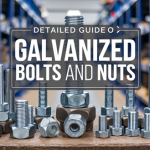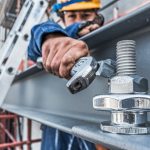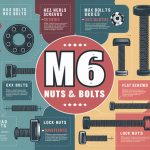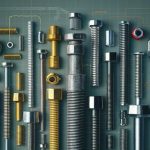These silent heroes form the backbone of construction, manufacturing, electronics manufacturing and many other industries around us – everything from skyscrapers to delicate electronics is held together with a realm of threaded bolts! However, their significance goes well beyond mere brute strength: In this guide, we’ll dive deep into their many forms, applications and intricate details so that you can navigate their terrain with confidence!
Bolts as Wonder: Exploring Their Diversity:
You’ll be impressed to witness the extraordinary selection of Threaded Bolt Manufacturers! Each with unique strengths and characteristics that provide solutions for specific purposes:
* Hex Bolts: These workhorses of the bolt world feature hexagonal heads for easy tightening with wrenches. Its implant Socket Head Bolts are also excellent choices when tightening in tight spaces due to internal sockets for Allen wrenches that enable tightening from multiple angles – ideal when tight spaces need tightening down quickly!
* Lag Bolts: Lag bolts are specially crafted to connect wood surfaces securely, featuring coarse threads with sharp points to secure tight connections. Carriage Bolts feature an oval head below their cap that helps form secure yet adjustable connections; typically used alongside nuts and washers to form strong relationships between parts.
* Eye Bolts: With looped heads that provide anchor points for cables or ropes and lifting applications.
These eye bolts represent just a sampling of threaded bolts found across different industries that play such an integral part of daily operations.
Material Matters: Revealing Hidden Depths
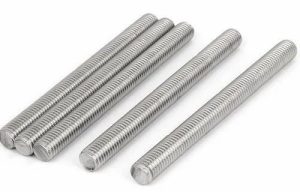
Your choice of material for bolts has an enormous effect on its strength, durability, and suitability for various environments:
* Steel: With its blend of strength, affordability, machinability and application possibilities – steel makes an excellent all-round material suitable for general construction work as well as everyday applications.
* Stainless Steel is ideal for marine environments and outdoor use as it requires little cleaning; aluminum offers lightweight solutions suitable for weight-sensitive projects like aircraft or delicate machinery.
* Brass can often be seen used decoratively or for applications requiring electrical conductivity, with selecting this material ensuring your bolts perform optimally and can withstand their environment.
As with Cinderella’s shoe, selecting an appropriately sized bolt ensures a safe and functional connection. Consider these key factors when making this selection:
* Diameter (mm): Measured in millimeters (mm), its diameter should match up with that of your fastening hole – too small could wobble while too large could damage the material.
* Length: Your length choice will depend on the thickness and required depth of materials being joined together and should allow enough penetration into both pieces for secure gripping action. Ensure it can reach both materials securely.
* Thread Pitch: This refers to the distance between threads; coarse threads provide faster assembly/disassembly while finer ones offer increased vibration resistance. With precision, measurements are key for professional finishes and optimal performance.
Tighten with Precision: Tightening Torques Accurately:
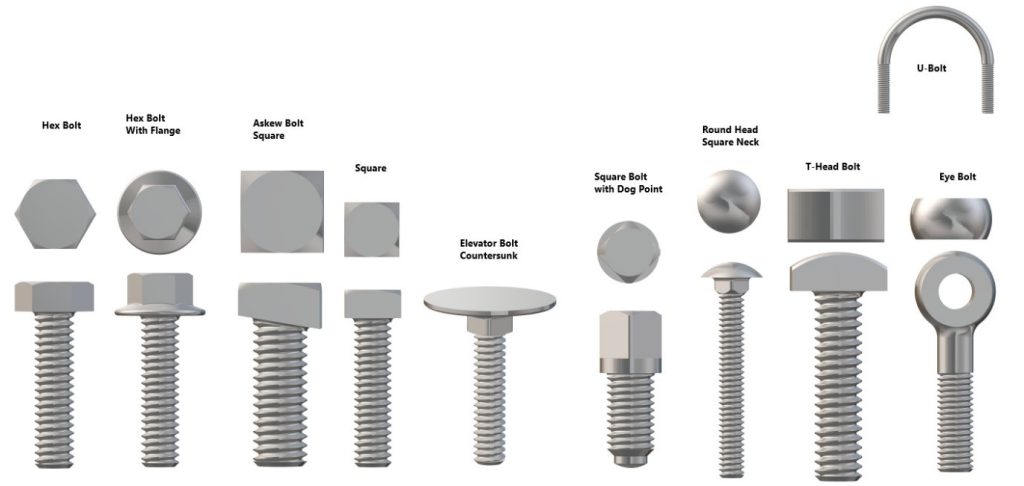
Overtightening can damage threads or the material surrounding them while under-tightening exposes bolts to loosening and potential failure.
Torque (measured in newton-meters – Nm), measures proper tightening:
- Torque wrenches should click or deflect at the desired torque value to prevent over-tightening and ensure safe connections without damaging bolts or projects.
- Torque tables provide recommended torque values based on specific bolt sizes and materials to ensure secure connections without the risk of damages being done to either.
Go Beyond the Basics: Bolts for Specialized Tasks:
There’s much more than standard hex and socket heads when it comes to the realm of threaded bolts – explore some unique applications:
- U-Bolts: They can wrap around pipes or other round objects and secure both ends using nuts on both ends – great for tight spots like corners!
- J-Bolts: Similar to U-bolts but featuring one straight end designed for embedding in concrete or wood.
- Eye Bolts with Swivel Nuts: Allow cables/ropes attached to them to move freely without becoming loose while staying securely fastened to their hooks.
- Toggle Bolts: For hollow walls or drywall surfaces, these bolts extend back behind the wall and expand behind to form secure anchor points for anchorage purposes. By understanding their capabilities you will expand your toolbox and tackle various fastening challenges more successfully.
Expand Your Horizons From Skyscrapers to Smartphones
Realm of threaded bolts has an infinite array of applications:
- Construction: From anchoring structural beams to attaching roofing tiles, threaded bolts serve an indispensable function in holding buildings together.
- Manufacturing: These threaded fasteners assemble machinery, fasten car parts securely together and connect components from across various industries – they truly serve multiple industries with one product!
- Furniture: From chairs and tables, screws provide structural integrity and stability of daily furniture use. Electronics: Tiny screws hold delicate circuit boards together securely while keeping electronic components from shifting or falling off of them.
The realm of threaded bolts forms an essential building block of our contemporary world, contributing silently yet significantly towards its functionalities and structures.
Build Responsibly, Select Sustainably:
As you embark upon your building journey, remember the significance of making responsible material selections – such as opting for fasteners made of recyclable materials or those designed for disassembly and reuse of fasteners. Your small choices contribute to creating a more sustainable future where building strong structures is paralleled by protecting our planet. Threaded bolts represent more than mere hardware; they symbolize innovation, strength, and the benefits of choosing the appropriate tool for any given job. So grab yourself some wrenches, arm yourself with knowledge, and start building! Your creations await being held together by these unsung heroes called threaded bolts!
Innovation at Work in Fasteners:
Threaded bolts have an exciting future that holds numerous exciting possibilities: * Smart Bolts – Integral sensors monitor stress and fatigue for real-time predictive maintenance data collection and real-time alerting services are provided when necessary.
* Biocompatible Materials: Bolts made of sustainable and biodegradable materials can contribute to a greener world.
* Self-Healing Capabilities: Imagine bolts that automatically repair minor cracks to extend their lifespan while decreasing waste production and costs.
These advancements promise to revolutionize construction, manufacturing and various other industries by making connections even stronger, smarter and more sustainable. 9. Unleash Your Knowledge as a Bolt Master
Always remain curious in exploring the world of threaded bolts!
* Explore, ask questions and expand your knowledge:
> Explore available online resources and technical manuals.
> Experiment with different bolt types and materials in your projects.
> Consult experienced professionals in the construction or manufacturing industries. With more knowledge comes greater confidence when choosing bolts that will secure success in any task you undertake – assuring the long-term viability and success of any creations made using that particular bolt.
From Tiny Threads to Mighty Dreams: Unleash Your Inner Builder:
Though threaded bolts might appear small and simplistic at first, they contain powerful potential that lies just beyond our fingertips. As you explore deeper into their world, keep this in mind: as their power and potential become clear, yours too could grow tremendously!
- There’s always something new to learn: Bolts and fasteners continue to innovate with exciting applications that present unique challenges and opportunities.
- Every project offers the chance to try something different, discover something new and perfect your skillset.
- Your imagination is the limit: Don’t hesitate to dream big, using your newly gained knowledge to realize creative visions that inspire.
Bolt Detectives: Unraveling Markings and Standards:
Have you noticed strange markings on your bolts that give away clues to their functionality? Learn the language of bolt markings to decipher them!
- Grade: It is identified with numbers (e.g. 8.8) that indicate its tensile strength and suitability for specific loads.
- Material: These abbreviations (such as SS for stainless steel) guide in selecting an ideal material for any environment.
- Origin and Standards: International standards such as ISO guarantee quality across different manufacturers.
Understanding these markings gives you the power to make informed choices and ensure your bolts meet project requirements.
Safety First:
Tighten Up With Care: Working with tools and bolts requires caution, and always wearing appropriate safety equipment such as gloves and eye protection when handling either one of them.
Select suitable tools, avoiding tools with worn edges and worn parts such as wrenches that have become round over time, for each task at hand, such as those made out of metal with serrations on them or that have become damaged over time. Tighten bolts gradually and evenly according to recommended torque specifications and do not exceed this amount as this may damage both the bolt itself and any surrounding materials.
Remember, safety should always come first when undertaking any building project and taking responsible actions will protect both yourself and the integrity of your creations.
From History’s Workshops to Tomorrow’s Frontiers:
Threaded bolts have an extensive history, stretching back to ancient Greece and Rome. Their evolution provides insight into human progress:
* Early bolts: Handcrafted iron bolts were commonly used for holding together early structures like chariots or early structures.
* Industrial Revolution: Mass production and standardization transformed bolt manufacturing, catalyzing construction innovations.* Modern Era: Emergence of innovative materials, coatings, and designs pushing strength, sustainability and functionality further beyond existing boundaries.
Threaded bolts offer great promise for shaping our built environment and inspiring future builders, so join the community: creating relationships beyond bolts. Connect with passionate builders, engineers and enthusiasts of threaded bolts through.
* Online forums and communities: Sharing knowledge among peers as well as learning from experienced professionals is always beneficial in developing professional connections in threaded bolts.
* Workshops and training programs: Hone your skills while expanding your understanding of fasteners.
Industry events and conferences: Stay current on industry advancements while networking with your peers and leaders in this specialized industry.
Engaging with the community fosters lifelong learning, collaboration and inspiration – driving bolted innovations forward.
The Final Tightening: Celebrating Threaded Titans
As you conclude your exploration into the thrilling world of threaded bolts, remember:
* Bolts represent more than simply hardware: they represent human ingenuity, strength and the potential power of collaboration. Every bolt from towering skyscrapers to delicate electronics plays a vital role in keeping our world intact.
* By selecting and employing appropriate bolts for their intended tasks in an eco-friendly. And creative manner, you help shape a more sustainable future.
So embrace the strength and potential of threaded bolts with respect, and start building with confidence! Your creations await them as these silent heroes hold together. Our world one bolt at a time – endless opportunities are awaiting your imagination and hard work. Remember, only one bolt stands between you and success.
Young builders: utilize the power of threaded bolts. And use your curiosity as your compass on an exciting adventure of creation. Keep safety top of mind. Build responsibly, sustainably, and with pride knowing these tiny titans will hold together. All your hopes and dreams with just a single bolt each.
Read Also: Bolt Export Dynamics: Paving the Path to Future Success
FAQs:
Young builders and curious minds navigating into threaded bolts’ fascinating world will no doubt. Find these 10 frequently asked questions (FAQs) helpful as you dive deeper.
1. Can regular nuts and bolts be used for projects requiring high strength?
Not always; regular bolts typically feature lower tensile strength that might snap under heavy loads. Making high tensile bolts the smart choice when it comes to applications such as securing beams or heavy machinery.
2. What if I need bolts of an unusual size or shape but can’t find them in stores?
Don’t despair; many companies specialize in custom bolt manufacturing. Simply provide your specifications regarding diameter, length, thread pitch. And material and they will create the ideal bolt to meet them!
3. What Are Anchor Bols Used for?
Anchor bolts serve to securely embed objects like posts, fences and railings to concrete and masonry surfaces such as driveways. Their expansion wedges or hooked ends enable safe embedding.
4. How can I prevent bolts from rusting?
To combat corrosion in moisture-prone environments and environments that might attract vermin. Choose stainless steel or galvanized bolts; additionally applying anti-seize lubricant. Or protective coatings may provide extra shielding against corrosion.
5. What are the differences between self-tapping and machine screws?
Self-tapping screws create their threads as you screw in, ideal for soft materials. Like wood and plastic, while machine screws require pre-threaded holes before installation. And are generally reserve for connecting metal pieces.
6. Can nuts and bolts be reused?
It is permissible to reuse nuts and bolts if they remain undamaged and undisturbed by stretching or damage. However they should first be check for cracks, wear, rusting. And cracked surfaces before reuse – otherwise replace as necessary.
7. What tools am I required to have when working with bolts?
At a minimum, wrenches (including socket, adjustable and open-ended styles), screwdrivers, pliers and tape measures will do. Furthermore, an investment in a torque wrench provides for precise tightening control in critical applications.
8. Can I paint over the bolts?
Yes, but make sure that painting won’t compromise their functionality or grip. Choose paints suitable to their material composition, while avoiding covering threads or contact surfaces with threaded fasteners or contact surfaces.
9. How should I dispose of used bolts responsibly?
Metal recycling centers accept steel and aluminum bolts. For other materials, check with your local waste disposal guidelines on appropriate methods of disposal.
10. Where can I obtain more knowledge on bolts and fasteners?
Hardware store staff, online resources, technical manuals and industry publications can all provide great sources of knowledge about fasteners. Don’t be shy to seek guidance from experienced builders or professionals.
Read Also:
> The Unsung Heroes of Construction: A Deep Dive into High Tensile Fasteners

